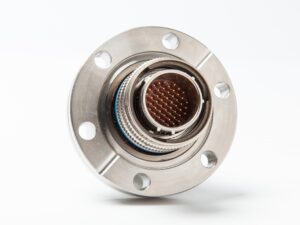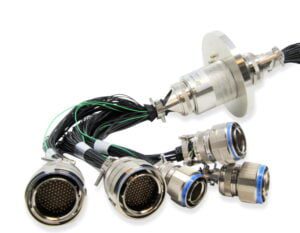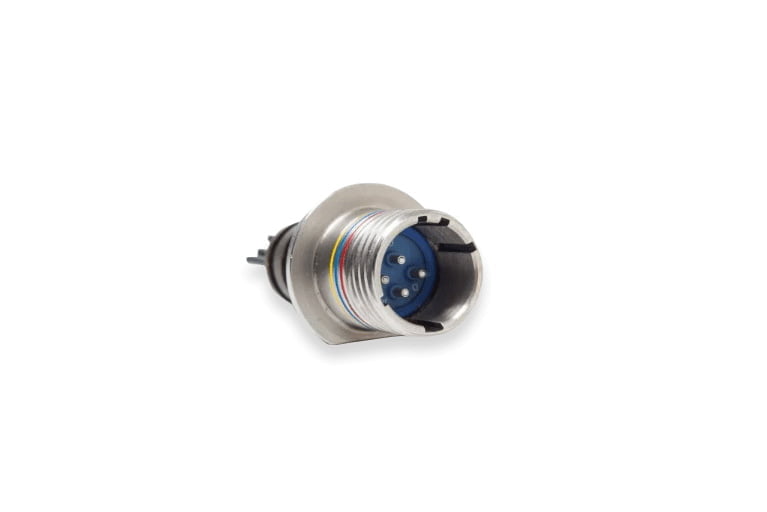Performance and reliability of connectors are essential in military and aerospace industries, where they are subjected to extreme environmental factors, mechanical stress, vibrations, and electrical performance requirements. Often commercial and industrial connectors cannot withstand environmental and operational extremities in this sector. This is where MIL-Spec connectors can make a difference. MIL-Spec standards for connectors define everything from their tolerances to exact geometry, material used for building the connector, material sourced, manufacturing method, testing and inspection processes, electrical performance, traceability, and more. In addition, there may be other specifications to boost their utility in extreme environments. Hermetic sealing is one of such additional requirements that equip these connectors for demanding operational environments. This post explores the MIL-spec connectors, common connector standards, challenges these connectors endure, and the role of hermetic sealing in improving their performance standards.
Overview of MIL-Spec Connectors

MIL-Spec connectors, also known as military standard connectors or MIL-SPEC, MIL-C Military Specification) MIL-DTL (Military Detail Specification), or MIL-STD connectors, are fiber optic and electrical connectors developed for use by the US Department of Defense. These connectors were developed starting in the 1930s and are extensively used in tactical service, aeronautical, industrial, marine, and commercial applications.
Overview of Most Common Military Standard Connectors
The following are a few common circular and rectangular Mil-Spec military electrical connectors used in military and defense and aerospace applications.
- Circular Mil-Spec Connectors: These connectors feature cylindrical shells with backshells attached to their shell housing. These backshells are attached using threads. Circular Mil-spec connectors are designed for threaded mating and help secure receptacles and plugs in place. They are employed for single-use and low-power applications. Below are some popular circular Mil-Spec connectors that are in use today.
- MIL-DTL-5015: This is a heavy-duty and large series of circular connectors used on most military equipment. It is designed for temperatures from -55°C to 200°C and handles heavy current loads.
- MIL-DTL-26482: These small connectors describe the requirements of two series of connectors designed for quick connection and disconnection and are widely used on military equipment, including aircraft applications.

- MIL-DTL-38999: This standard covers two series of high-density, quick-disconnect, bayonet coupling, circular, and environment-friendly connectors developed for continuous operation in the temperature range of -65°C-+175°C. MIL-DTL-38999 connectors are extensively used in military and commercial automotive products.
- MIL-DTL-26500: These MIL-Spec circular connectors assure excellent fluid resistance and environmental shielding. They are developed for an operating temperature range of -65°C to 200°C and are extensively used in military applications, industrial, and telecommunication environments. They are available in threaded or bayonet coupling options for high-vibration environments.
- Rectangular Mil-Spec Connectors: As the name suggests, these are rectangular-shaped connectors, easily recognized by their uniform dimensions. D-sub connectors belong to this family and feature fixed contacts and high current carrying capacity. Rectangular Mil-spec connectors use internal locking mechanisms or levers to secure connections. These connectors are used for high-power and multi-use applications. Below are a few popular types of rectangular Mil-Spec connectors used today.
- MIL-DTL-24308: These are compact pin connectors designed for high-density packages in military applications. They belong to the D-subminiature family and feature solid machined contacts. They come in various classes, mounting options, and layouts, including standard, double-density, high-density, and combo-D constraints. MIL-DTL-24308 connectors are used in space-and-weight-constrained military and aerospace applications that feature denser circuit layouts such as ground support systems, aircraft missiles, satellites, and so on. These connectors are designed for temperature extremes from -55 °C to +125°C.
- MIL-DTL-83513: These connectors are nearly half the size of D-subminiature connectors and are extensively used in military applications owing to their ruggedness. MIL-DTL-83513 connectors can withstand temperature extremes from -55 °C to +125°C.
- MIL-DTL-32139: These are rectangular connectors designed for aircraft, military, and space applications. They feature single- or dual-row nano prewired connectors. MIL-DTL-32139 connectors can easily withstand temperatures from -55°C to +200°C.
Although all these standards help meet the challenges of operational environments in military and aerospace applications, some applications may demand extensive protection or a complete airtight seal. This is where hermetic sealing can make a difference. The next section will help you understand how hermetic sealing helps improve the performance of MIL-Spec connectors.
Why Hermetic Sealing is Important for Mil-Spec Connectors
Hermetic sealing adds a new layer of robustness and security to military connectors exposed to rigorous forms of abuse such as extreme temperature changes, pressures, moisture, and gas ingress. Hermetic sealing helps to:

- Create an airtight sealing
- Waterproof the connector
- Safeguard connectors from aggressive media in hazardous environments
- Improve resistance to thermal and mechanical shocks
- Improve endurance of a connector in high altitudes
- Enable operation under vacuum or positive pressure environments
Military standard connectors are used in pressurized cabins, vacuum chambers, probes, valves, sensors, and so on.
Hermetic Connector Sealing Technologies Discussed in Brief
Hermetic sealing for military standard connectors is usually created using glass-to-metal, ceramic-to-metal, and epoxy polymer-based sealing.
- Glass-to-Metal Sealing: This sealing is created by fusing glass with metal to create a passthrough or feedthrough. The glass is bonded to the metal and pin through a controlled heating process. When the part is heated, the molten glass flows to the cavities to seal the connection points. It is further hardened through the process of annealing. Glass-to-metal sealed connectors are robust and can withstand high temperature and pressure differentials.
- Ceramic to Metal Sealing: This sealing is created by fusing ceramics with metal. There is an intermediate metallic brazed layer between the ceramic insulator, metal shell, and pins. Ceramic-to-metal sealing offers superior performance in some applications compared to glass. The resistance to thermal or mechanical shocks can be improved by using filler metals. The fillers can also be used to improve its resistance to high temperatures.
- Epoxy Polymer-based Sealing: In this type of sealing, an epoxy compound and a housing material is used to encapsulate electric conductors, such as stranded wire, pin, or threaded stud. The conductor is fed through the opening with epoxy curing during the process. Epoxy seals assure excellent signal density for all conductors, including cables, wires, fiber optics, circuit boards, and so on. It also helps achieve minimal conductor-to-conductor spacing.
So, which type of sealing would you prefer? While this would depend on your application requirements, epoxy polymer-based sealing is one of the best options for sealing military-type connectors. If you have been considering this option for a while, partnering with an experienced hermetic sealing technology company like Douglas Electrical Components may help.
Douglas Electrical Components: Your Trusted Partner for Interconnect Solutions
You can leverage Douglas Electricals’ unmatched engineering expertise to build the right hermetic electrical connector for your application. We perform hermetic sealing on various types of connectors that meet rigorous military specifications, such as MIL-DTL-5015, MIL-DTL-38999, MIL-DTL-26482, MIL-DTL-24308, MIL-DTL-83513, and MIL-DTL-32139. We work with various types of epoxies, which yield varying results in hermetic performance. We also employ a NASA-certified outgassing epoxy tested per ASTM E-595-93 (0.33% TML. 0.00% CVCM). Contact us today to learn more about our hermetic sealing technology capabilities and engineering expertise.


